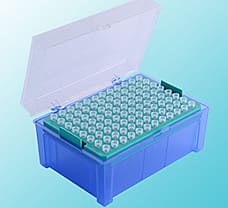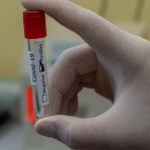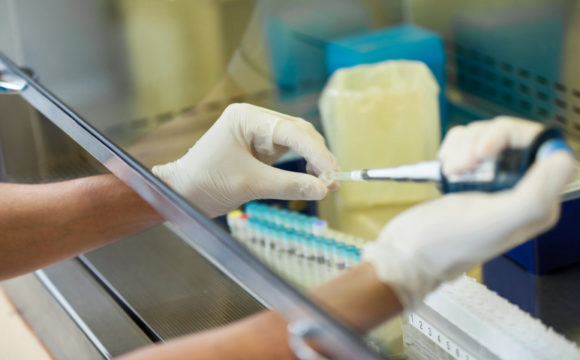One of the most broadly utilized methods of any Biology, Chemistry, and Physics laboratory is liquid handling. While it is very simple and hassle-free to deal with larger volumes of fluids by utilizing lab apparatus like a beaker, graduated cylinder, volumetric flasks, etc, working with the minute or smaller volumes of fluid gets problematic, tricky, and often dreary. The key to good and fruitful experiments and regular laboratory practices lies in the accuracy and effortless use of the apparatus required for carrying out the procedures. Almost every other experiment like PCR, ELISA, DNA isolation/purification, etc requires the use of a micropipette which needs extraordinary precision in the handling of minute fluid volume like few microlitres.

For the handling of small volumes of liquid, micropipette is the instrument that is utilized in the research laboratories. They are most generally utilized in biology labs, microbiology labs, chemistry labs, pharmaceutical labs, forensic labs, drug discovery labs, etc. A micropipette can vary depending upon its size that can range from P2 (0.2-2 uL), P10 (1-10 uL), P20 (2-20 uL), P100 (20-100 uL), and P200 (20-200 uL) to P1000 (100-1000 uL).
Another significant aspect in which the pipettes are distinguished is Micropipette tips. The fluids are never drawn directly into the shaft of the micropipette rather a disposable tip is attached manually to the shaft of the micropipette. All micropipettes have a volume adjustment dial at the top. In order to prevent contamination new tip is utilized for every sample, discarding the older one. The most fundamental feature of a micropipette tip is its high quality, whether you’re searching for low retention, filtering, gel loading, or mixing of samples thoroughly, ensure that the tip will work as required and as exact as your micropipette.
Characteristics of an ideal micropipette tip
- The micropipette tips should be DNase, RNase, and Endotoxin free to avoid any sort of contamination.
- The micropipette tips should be intended to be utilized in a broad assortment of pipetting purposes and viable with various types of pipettes.
- The tips should have a clean and hydrophobic surface to guarantee low retention and high precision and reproducibility.
- The micropipette tips should be transparent for clear visualization.
- The tips should be of high clarity and fine tip opening.
- For accurate pipetting, the tip should have a firm grip on the pipette by its internal radial rings.
- The opening of the tip should be exactly focused on directional precision.
Types of Micropipette Tips
The micropipette tips make a reliable and precise pipetting framework. The tip is the only part of the micropipette that comes in direct contact with the solution hence, the most essential part of pipetting. The micropipette tips are available in 3 distinct types:
1. Non-sterile tips

These are the most commonly utilized micropipette tips across all the laboratories. These tips are frequently utilized in research facility applications where sterility isn’t much required for the experiment or test being performed. Non-sterile tips can be bought in mass, racked, and different reload style choices.
2. Sterilized tips

These tips are intended to forestall contamination. Sterile tips go through a sterilization cycle to guarantee that there are no microorganisms on it which are commonly done through radiation. in case of sensitive testing or experiment, one should always prefer tips that have been autonomously certified free of DNase, RNase, ATP, and endotoxins. Racked tips utilized for critical assays go through a consecutive disinfection process in addition to being produced DNA/RNase-free to give a higher Sterility Assurance Level or SAL. Ensure the SAL level is suitable as per your requirement. The sterilized micropipette tips are ideal for experiments like cell culture, PCR Assays, DNA purification, etc.
3. Filter tips

The primary purpose of these filter micropipette tips is to prevent the formation of aerosols. The aerosols are generally tiny solid/liquid particulates that can stay airborne for a significant amount of time and could even be inhaled. 65% of all lab contaminations are brought about by aerosols, generally by breathing in them. These tips likewise shield the samples from aerosols in the pipette that were produced from earlier pipetting activities. Filter tips are especially important for ultrasensitive molecular biology applications. However, some tips have additives that hinder the liquid flow and/or change color if the liquid is suctioned into them. The possibly contaminated sample remains bolted inside the tip, which is certainly not a decent choice for tests with a limited volume. Therefore, one should always check for polyethylene made filtered tips without sealing additives to ensure sample integrity. Filter micropipette tips are a financially savvy instrument that can be utilized as a precaution measure towards ensuring your pipettes life span. These tips are frequently utilized in contamination sensitive experiments or labs like forensics and clinical diagnostics.
Points to consider when inserting a tip in the micropipette
- Choose the correct tip size
- Keep your hands off the tips while opening the box that contains the micropipette tips
- To join the tip to the pole of the micropipette, position the micropipette shaft into the tip and firmly press down and then remove the micropipette with the tip being attached.
- Close the tip box without touching the tips.
Choosing the suitable micropipette tip for your experiments
The points should be kept in mind while selecting a micropipette tip for an experiment or test:

- Pipette tips are a necessary aspect of the fluid handling technique, and utilizing low quality or ill-fitting micropipette tips will fundamentally affect the performance of even the best pipette.
- Pipette tips are available in an assortment of configurations and sizes that are suitable for various applications. The types are standard, extended length, filtered and non-filtered, and macrovolume as well as tips structured explicitly for automated frameworks.
- One should ensure that the packaging is both reasonable and advantageous for their application.
- Always go for high quality, additive sealing free micropipette tips to avoid contamination of samples.
- Ensure the proper fit of your pipette tips to minimize error and to guarantee exact outcomes. You shouldn’t need to apply inordinate force to attach the tip and it should remain in place on the micropipette. On the off chance that the ejector doesn’t work, or there is spilling of fluid it might be an inappropriate tip.
- Search for tips with exceptional low retention characteristics for the best performance. Such tips will additionally shield your samples from possible chances of contamination.
- Try before you buy i.e. a request for sample pipette tips to make sure to ensure they fit the pipettes in the laboratory, meet the necessities, and the demands of utilization.
References
- https://blog.biomall.in/working-with-small-volumes-introduction-to-micropipette/
- https://adarshsomani02.wordpress.com/tag/pipette-tips/
- https://www.ncbi.nlm.nih.gov/pmc/articles/PMC3941987/
- https://blog.universalmedicalinc.com/everything-you-wanted-to-know-about-pipette-tips-and-more/#:~:text=Pipette%20tips%20come%20in%20three,experiment%20or%20test%20being%20performed.
- https://solutions.pipette.com/types-of-pipette-tips/
- https://www.labcompare.com/General-Laboratory-Equipment/6102-Pipette-Tips-Micropipette-Tips/
- https://adarshsomani02.wordpress.com/tag/micropipette-tips-sizes/
- https://solutions.pipette.com/micropipette/










